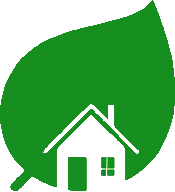FAQs
PRODUCT QUESTIONS
Are these bacterial additives safe?
Yes, they are completely safe to store and use in the home when they are used according to the directions. Our products are not harmful to humans or pets, and they will not harm drains or pipes.
I’ve never pumped or used an additive. Why start now?
The first sign of a drain backup is the initial signal of a failing system. A regular maintenance schedule is critical for septic system longevity.
Are bacterial additives a replacement for pumping?
No. They are an important part of maintenance and will help septic system longevity.
PRODUCT QUESTIONS
Is there anything I can put in my tank to avoid future problems?
This is the 2nd most asked question. We recommend our bacterial additives. These high-potency products will keep the tank healthy and balanced, and will help remove buildup in order to reverse any clogging trends that may have begun.
How can I extend the life of my septic system?
Conserve water:
- Repair water leaks
- Do full dishwasher and laundry loads
- Take showers in lieu of baths
- Ensure products in your home are septic-friendly
- Use white toilet tissue (it breaks down faster than colored tissue)
- Use phosphorus-free detergent
- Get your septic system inspected. You want to know your septic location, age, size, and condition
- Periodically have your septic tank pumped
- Never drive over your drain field
Is there anything I should avoid putting down the drain?
Yes. Any product that carries a harsh warning will kill the bacteria in your septic tank. This can be overcome with increased bacterial addition. A rule of thumb is to look for one word on your products: biodegradable. Biodegradable products are capable of being decomposed by bacteria. Avoid putting cigarette butts, diapers, tampon applicators, and other non-biodegradable materials in your septic tank. Grease, vegetable peelings, coffee grounds, and eggshells are also difficult to breakdown and should be thrown away/composted in lieu of your septic tank.
What about water softener?
Most water softeners use a saline backwash. Salt is nature’s preservative. It will impede the bacterial activity that is needed for proper septic tank operation. Again, an increased dosage of our bacterial additive will help.
How does the garbage disposal affect my septic tank?
Septic tanks were never intended to receive undigested solid material. An increased dosage of our bacterial additive will help.
The answer to this question depends on several factors, including age and design of the system, frequency of use, and maintenance it has received. Consult the chart below for basic guidelines on pumping frequency. Factors that affect the frequency of pumping include: increase in household member size, the addition of bathrooms, installation of a garbage disposal or water softener, past maintenance, and more often than not, a bacterial deficiency, indicating a clogging trend in the soil absorption area.
Estimated Minimum Septic Pumping Frequency in Years:

Was my septic tank full?
This is the single, most-asked question of septic pumping contractors. The fact is that except for immediately after pumping, septic tanks are always full, and are designed to operate full. They will refill in several days after pumping. If your septic tank is not full, it is leaking which can be a very dangerous situation.
Why is my yard soggy?
If the weather has been dry, a soggy yard indicates a soil absorption area failure. This situation needs to be addressed immediately before the entire septic system fails, requiring excavation, major disruption of your yard, and a huge expense.

Our products are
proudly made in the
U.S.A

